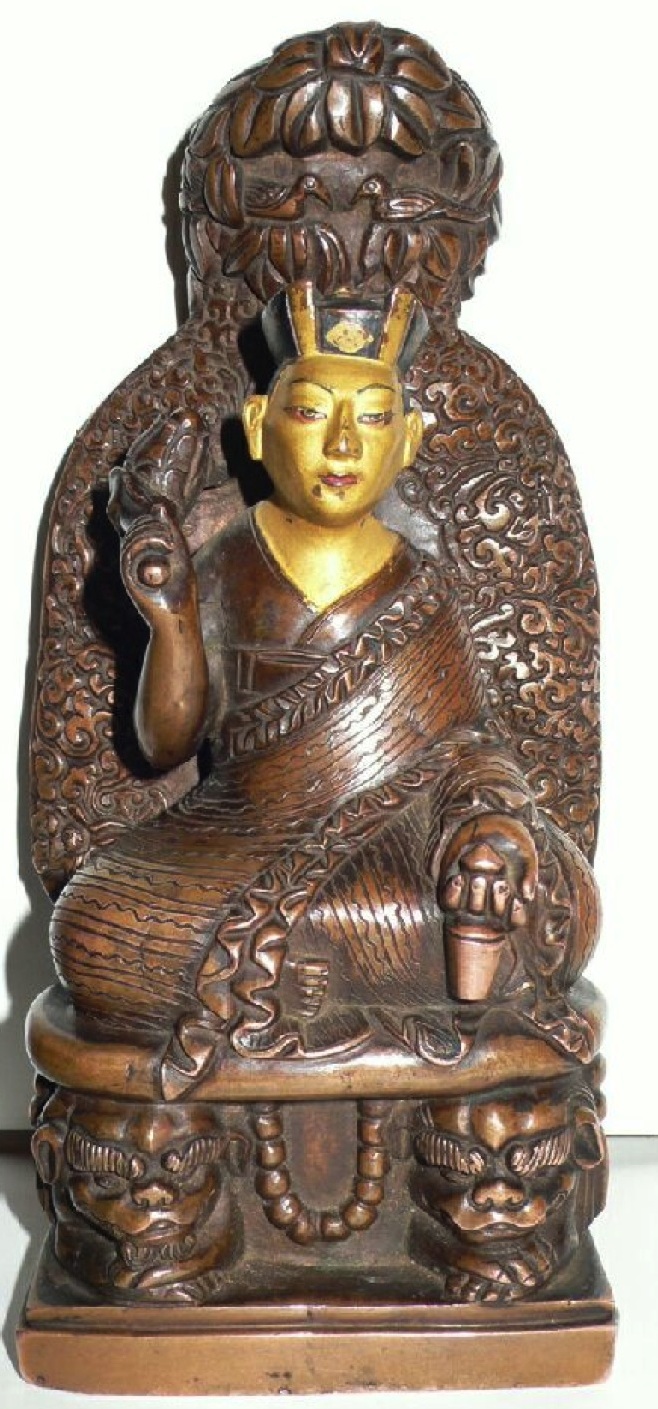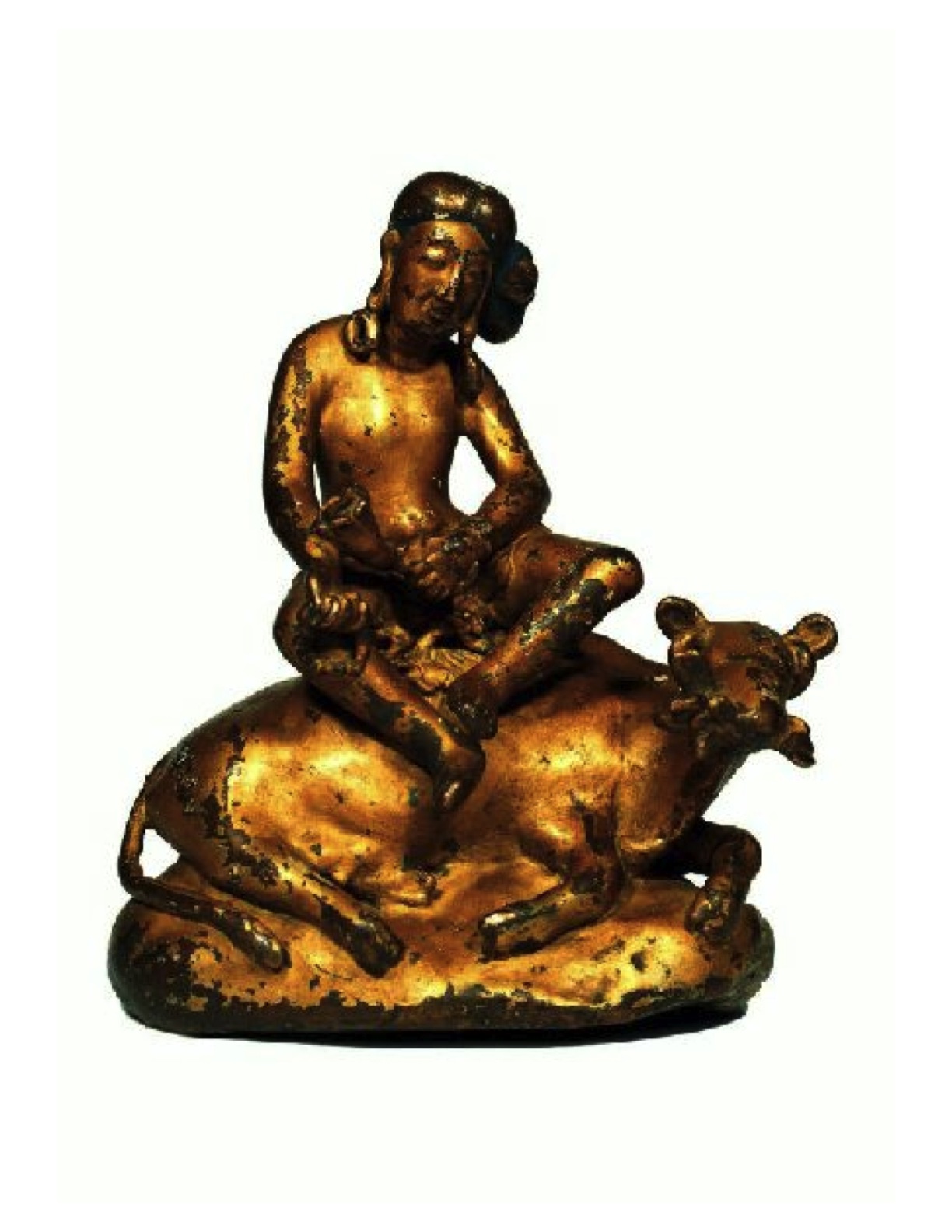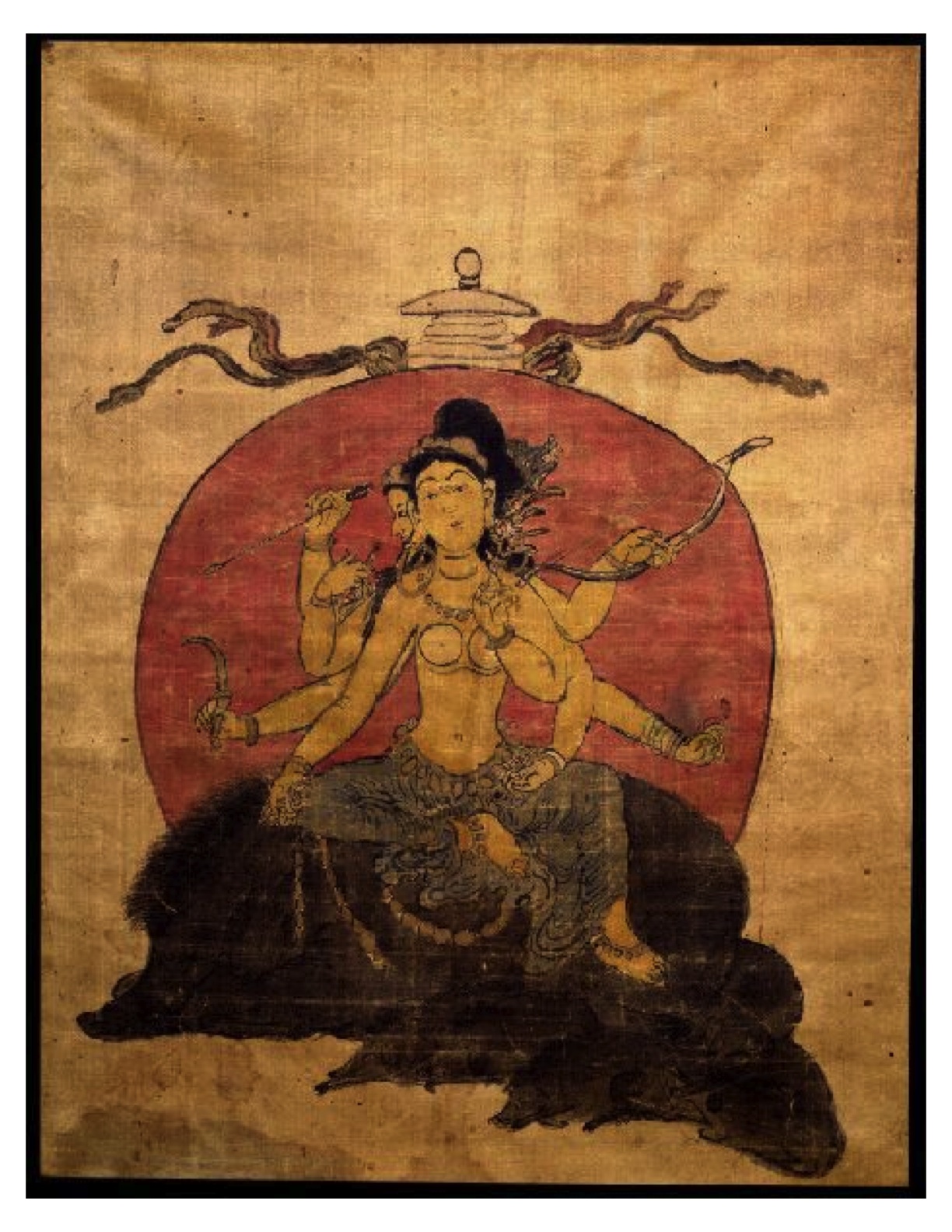Biography and autobiography in Tibet are important sources for both education and inspiration. Tibetans have kept such meticulous records of their teachers that thousands of names are known and discussed in a wide range of biographical material. All these names, all these lives—it can be a little overwhelming. The authors involved in the Treasury of Lives are currently mining the primary sources to provide English-language biographies of every known religious teacher from Tibet and the Himalaya, all of which are organized for easy searching and browsing. Every Tuesday on the Tricycle blog, we will highlight and reflect on important, interesting, eccentric, surprising and beautiful stories found within this rich literary tradition.
Treasury of Lives: The Tenth Karmapa, Choying Dorje
Choying Dorje (1604–1674), the Tenth Karmapa, is considered to be one of the most innovative artists in Tibetan history. His elite status (the Karmapa incarnation remains one of the most powerful lines in Tibet) and his many years of travel across Tibet and then in exile on the Tibetan-Chinese borderland gave him both the clout and the wide-ranging cultural experience necessary to create a style uniquely his own. Although Choying Dorje did receive some formal painting instruction as a young boy, he was mostly self-taught, copying great works of art he came across throughout his fascinating, complicated life.

Choying Dorje was born in Golok, on the border between Amdo and Kham. He was recognized by the Sixth Zhamar, Chokyi Wangchuk (1584–1630), at the age of 8. Chakmo Gushri, a local warlord on the eastern edge of the Tibetan Plateau exerted great control over the boy for much of his early childhood, and so it wasn’t until much later that he was able to begin formal study under the Third Pawo, Tsuklak Gyatso (1567/8–1633).
In 1624 Choying Dorje received full ordination from Pawo, Zhamar, and the Fifth Situ (1562–1632). Afterwards, the Sixth Zhamar, Choying Dorje’s second and most important teacher, was finally able to sit down with the Karmapa for intensive studies. A close relationship developed between teacher and student. They enjoyed each other’s company immensely, and spent many long hours together studying and painting. The Karmapa’s biography contains beautiful details in which the Zhamar and the Karmapa were able relax: bathing in a river, diving for stones, gazing at the stars.
The Zhamar supported Choying Dorje’s interest in art. The Karmapa’s biography holds that one day while sitting at the Zhamar’s newly founded temple at Drin, the Zhamar said to his student, “Since you are an expert and well-trained painter, why are you neglecting these skills? You should paint things like the silk tangka of the Sixteen Elders that we made earlier together at Tsurpu, beautifying it with excellent colors. It will bring you merit.” The Karmapa followed his teacher’s instructions and finished the painting in five months. Not long after, the Zhamar passed away at Dingri at the age of 46.

After his teacher’s death, the Karmapa was reported to have spent years in strict solitude. In 1636 the Karmapa left Tsurpu and went on pilgrimage to Mount Kailash, Milarepa’s hermitages around Dingma Drin, and then to Tsari. The journey gave the Karmapa the opportunity to view and copy some of the most important paintings and sculptures along this route.
The 17th century was a time of great political and religious tumult in central Tibet. In 1639 U and Tsang erupted into war, one that resulted in the ascendance of the Dalai Lama and Geluk power in Lhasa. When Gushri Khan (1585–1655), leader of the Khoshot Mongols, reached as far west as Kongpo and captured territories there, Choying Dorje was asked to call upon the military forces of the area. The Karmapa decided not to get involved and was criticized for not helping to defend his patron, the King of Tsang.
Following the defeat of Tsang and the subsequent forced conversion of many Kagyu monasteries, the Karmapa, having waited out the hostilities in southern Tibet, was almost captured. Concealing his identity by wearing layman’s clothes, the Karmapa set off in secrecy, spending much of the next 24 years in Gyeltang, what is now northern Yunnan. During his time in exile the Karmapa broke his monastic vows of celibacy and became the father of several sons and daughters. He also met and gave novice ordination to the reincarnation of his teacher, the Seventh Zhamar Yeshe Nyingpo (1631–1694).

In 1672 Choying Dorje set off for Lhasa with his family. In 1673, having arrived back in central Tibet, Choying Dorje had an audience with the Fifth Dalai Lama, Ngawang Lobzang Gyatso (1617–1682) for the first time in 40 years. The Fifth Dalai Lama instructed Choying Dorje to go to Drak, a remote region south of Lhasa. There at Ngakdrak Monastery he produced some of his last works of art, a scuplture of Vajrapani and a drawing of the goddess Marichi. There in Drak he fell ill and passed away at the age of 70.
Throughout his life, everywhere he went, the Karmapa produced art objects. Inspired during his time in exile on the Tibetan-Chinese borderlands, Choying Dorje’s paintings show Chinese influence. Choying Dorje’s sculptures are immediately identifiable, melding an ancient Kashmiri style with his own charming aesthetic. Through his biography, we get to know Choying Dorje, a man whose life was wholly shaped by the politics of the time, and throughout this maelstrom, produced a vast amount of beautiful, distinctive art objects.